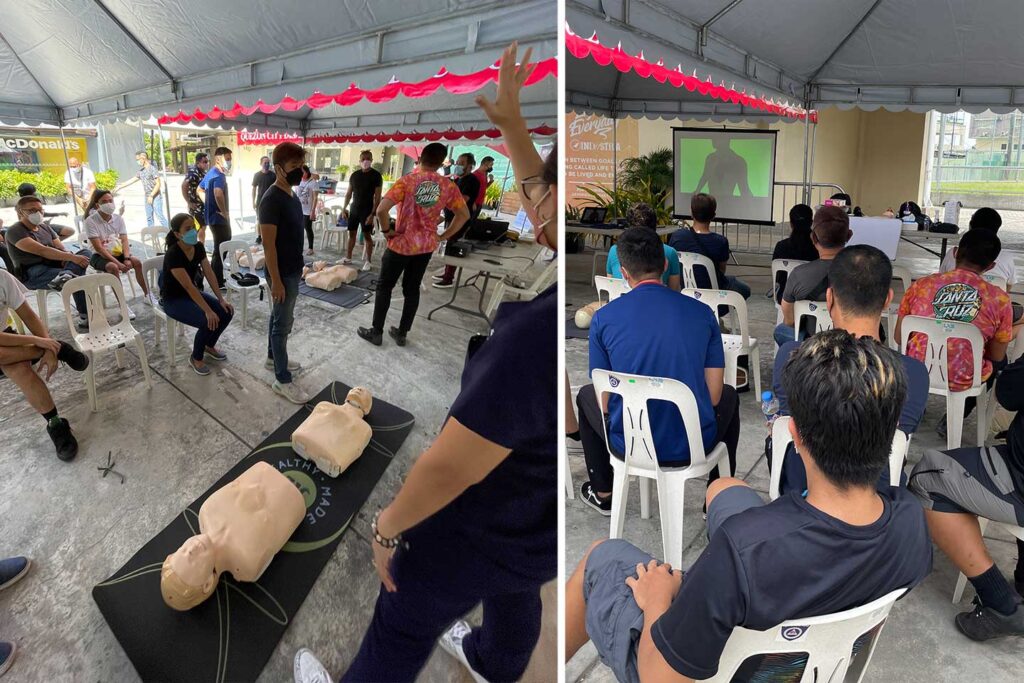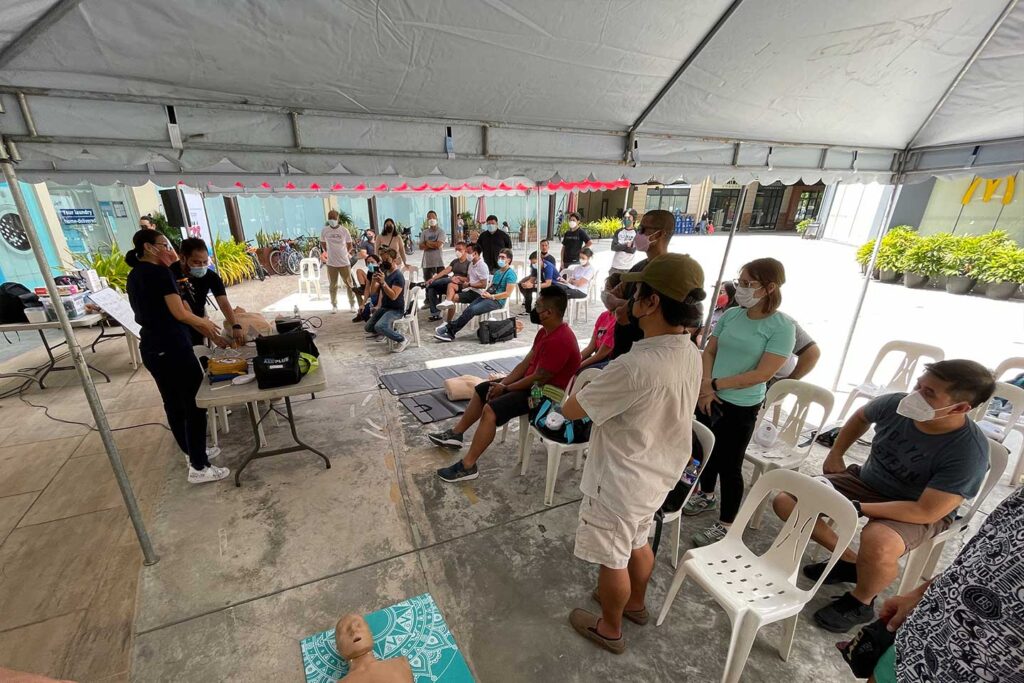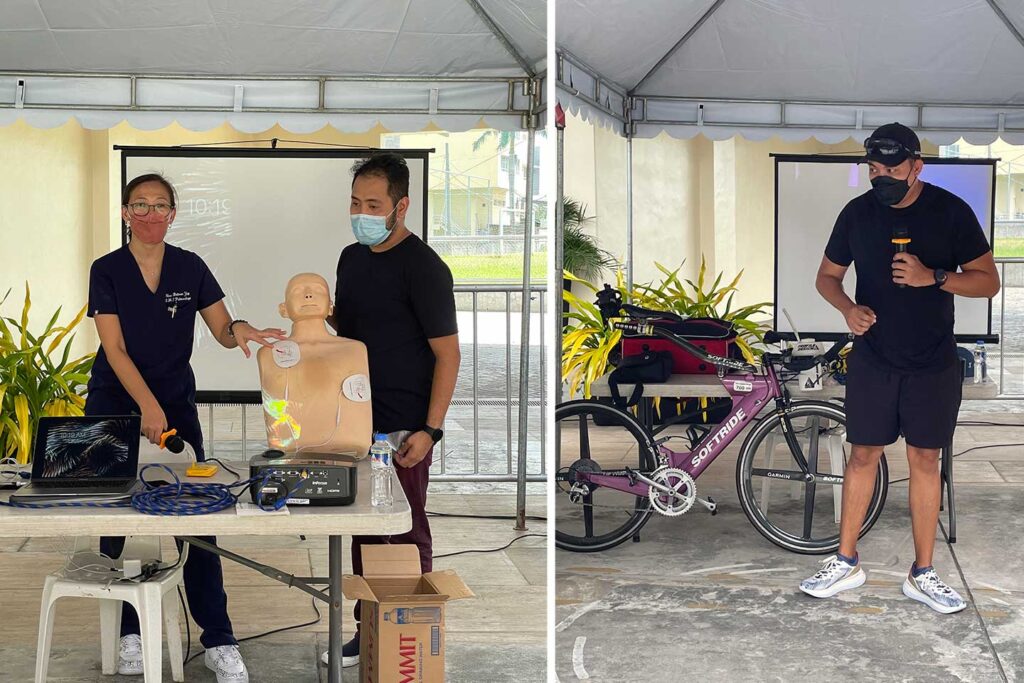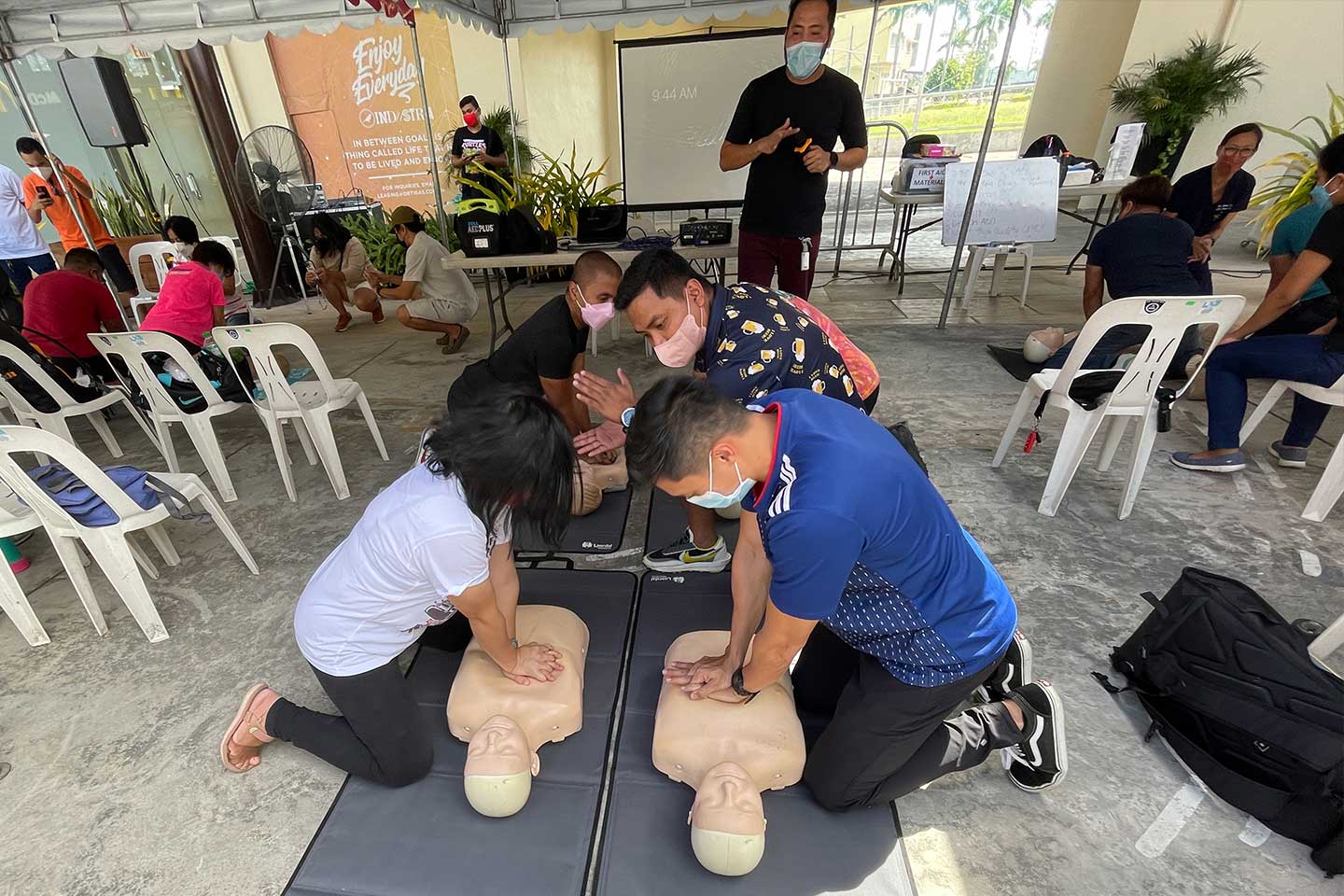Accidents and sudden medical problems can occur while you’re on the road. You might encounter a fellow cyclist passing out due to exhaustion, someone who had a heart attack after figuring in a road mishap or a passerby who had a cardiac arrest.
It’s important that there’s someone nearby who can attend to a patient’s needs, especially during critical times. It’s always better to equip yourself with knowledge and skills in giving immediate medical attention like CPR or cardiopulmonary resuscitation.
Last March 26, a group of medical volunteers and cyclists conducted the CPR training “Heartsavers: CPR For All” at Industria Mall in Circulo Verde, Quezon City.
CPR is performed when someone has experienced cardiac arrest or when a person is not breathing normally.

Why is it important to learn proper CPR, particularly for cyclists?
First, it saves lives. CPR is conducted to help oxygenated blood flow to the patient’s brain and other organs until a pulse can be appreciated. It is significant because it can keep the troubled person alive while waiting for an ambulance or a medical personnel.
In an emergency, every minute counts. Someone who has knowledge in conducting CPR would know how to immediately act on this kind of medical emergency.
Some people have this notion that only those who are in the medical field can learn CPR. Anyone can do it, as long as they attend proper training – resuscitation based on assumptions like observations seen in the media or a lesson from a random friend could cause more harm compared when you are doing it correctly.

It is ideal for cyclists to learn this skill because whenever there’s a medical emergency on the road, they can easily attend to the patient’s needs since they are mobile.
Cycling can be a physically-demanding activity too and there have been incidents where bikers pass out in the middle of the ride. If you’re biking as a group, it’s better if there are people in it who can conduct CPR if ever someone should need it.
Performing CPR can be exhausting and someone can easily run out of energy after a series of pumps. If the patient does not recover and the person conducting the resuscitation gets tired, another individual can take over.
CPR stops when the breathing is restored/improves and when a pulse can be appreciated.
Here are the guidelines that you should follow when you see someone having a cardiac arrest.
1. Make sure that the scene is safe.
2. Check if the patient is responding.
3. Call the attention of others for help.
4. Check the patient’s breathing for five seconds.
5. Ask people to call 911 or an ambulance.
6. Ask people to get an AED (automated external defibrillator)
7. Start high quality CPR (cardiopulmonary resuscitation)
How to conduct high quality CPR?
1. Place your hands at the center of their chest
2. Push hard and fast.
3. Make 30 chest pushes.

If ever you learn about organizations conducting CPR training, please grab the opportunity to attend and learn.
During the “Hearsavers: CPR For All,” Apollo Aranas from Stat Med and Dr. Nina Beltran-Yap lead the training which includes utilizing basic equipment. Fitness coach Al Gonzales gave a talk about road safety.
“Heartsavers: CPR For All” was a joint project by University of the East – Ramon Magsaysay American Heart Association Training Center, Fe Del Mundo Training Center, First Bike Ride, Bikes for the Philippines and The Bike Playground.
It is supported by Quezon City Disaster and Risk Reduction Management Office, Black Mamba, Fox, Livall, Oh My Greek!, Meraki, I Love Handmade bike reflectors, Stuff Wrap, Wira, R. Lapid’s Chicharon and Barbecue and Stat Med.


